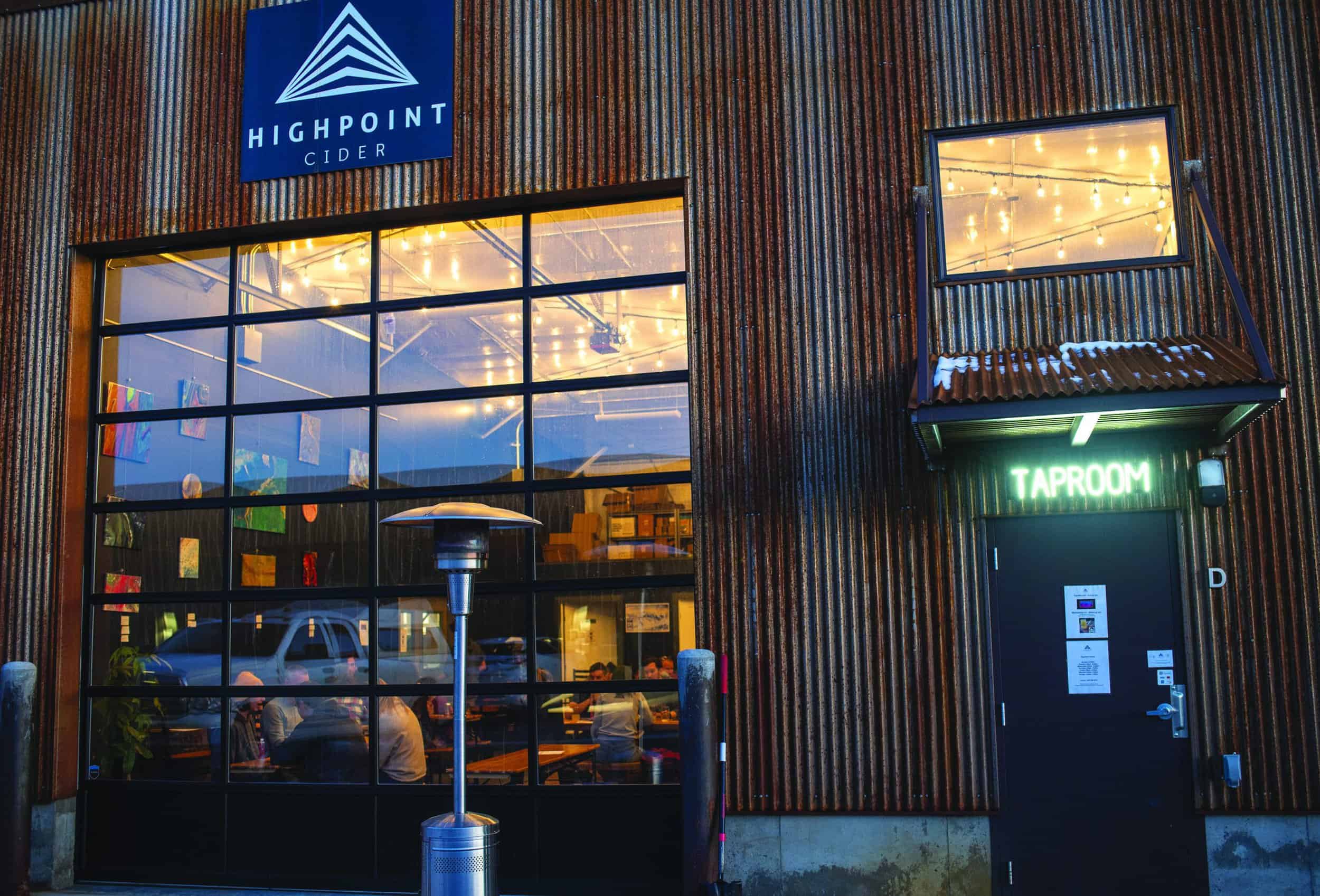Read The
Current Issue
Highpoint
A Taproom in Teton Valley
// By Sue Muncaster // Photography by bradly j. boner
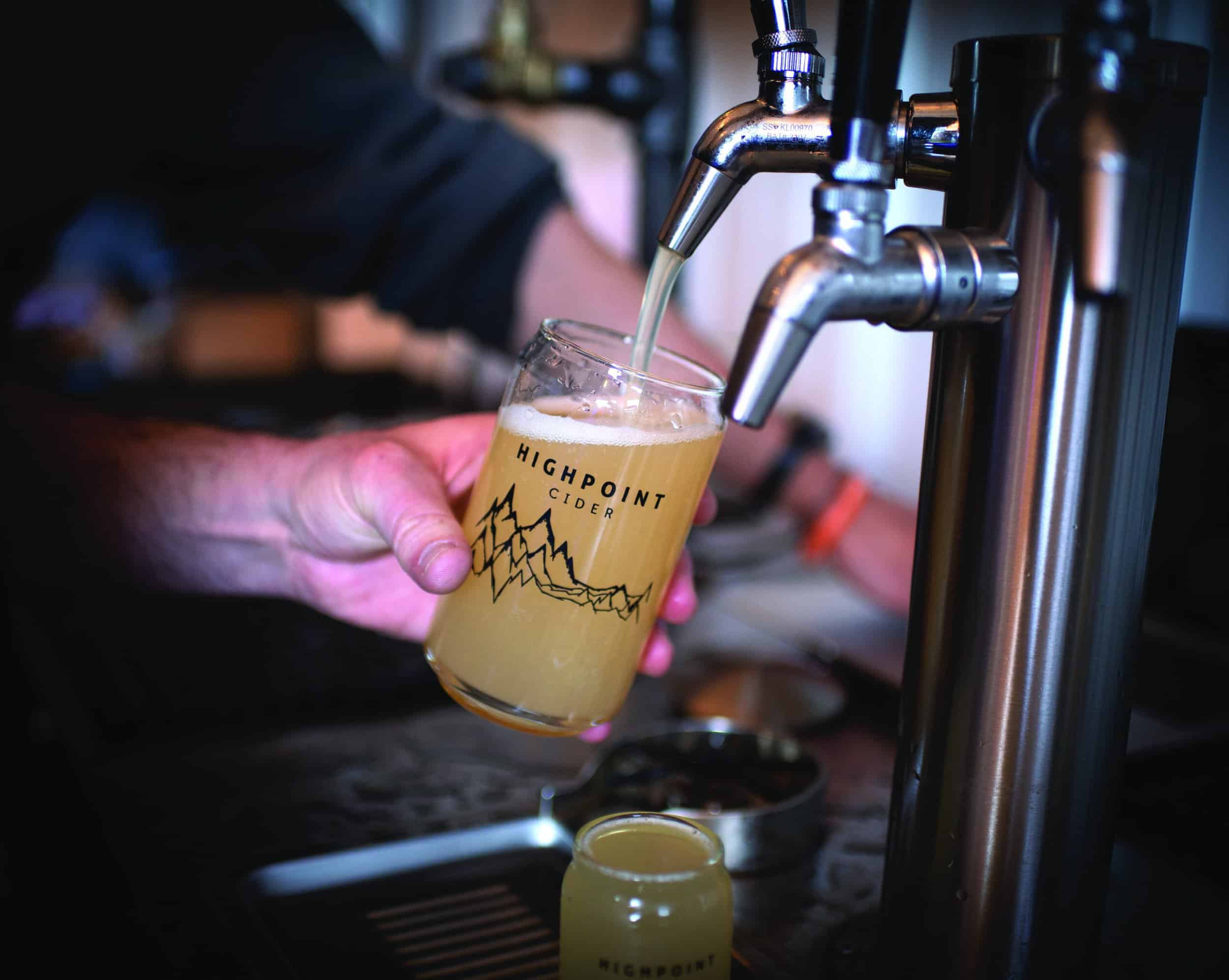
Over Teton Pass from Jackson Hole, in Teton Valley, Idaho, visitors can find top-notch bike trails, endless hiking, some of the best trout waters in the nation, and small towns deeply rooted in Western heritage. For decades, a stop at the Victor Emporium for a huckleberry milkshake was the best way to celebrate a long day’s exploits here. Nothing against the Emporium, but we’re excited to now have a more grownup alternative, the Highpoint Cider Taproom (and yes, kids are welcome).
Here, sit inside the airy taproom where the current ciders are on tap, or grab one of the picnic tables outside. Wherever you sit, it’s likely you’ll find yourself next to locals dressed in shorts and flip-flops tossing dice or playing cards. On a Tuesday evening, you’ll be hard-pressed to find a seat during the wildly popular weekly trivia night.
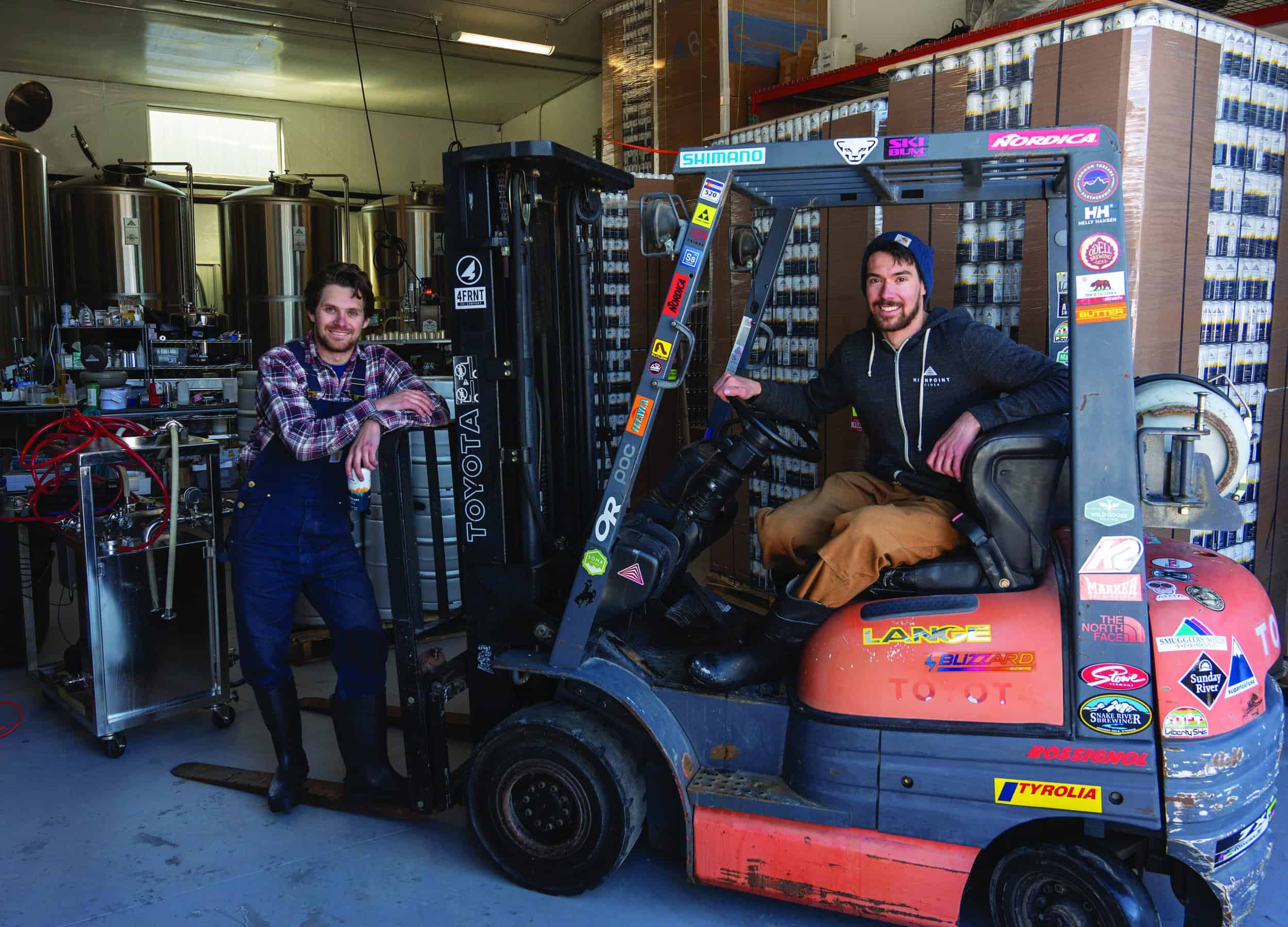
Co-founded by brothers Andrew and Alex Perez, the Highpoint Cider Taproom opened in late April of 2021, but the brothers started conceiving of the venture in 2017. At that time, Alex, the older brother, was living in Boston and working remotely for GE. And he was tired of the city life. He decided he wanted to live in a ski town—Jackson—for a year or two.
It wasn’t long after he landed in Wyoming that he saw there was a lack of cider options in the area, and the West in general. Back in Boston, Alex had frequented craft cideries like Citizen Cider and Prospect Ciderworks, which was owned by a friend. (Both of the brothers’ fondness for hard cider came from their father having Celiac disease, an immune reaction to gluten. Most beers have gluten, but cider is naturally gluten-free.)
In Boston, Alex had mentored at a venture accelerator, where he took early-stage ideas and created business plans for them. In Wyoming, he decided to put an idea for a local craft cider company through this process. “It seemed like a better idea the more I looked at it,” he says. “The difference between craft beer and cider is there are approximately 10,000 brewpubs in the USA, and only 1,000 super-small, local cideries.”
In the 2021 Best of Teton Valley survey, Highpoint won “Best Pour.”
In early 2018, Alex called Andrew, who has a degree in biochemistry from the University of Vermont and was burning out in a management consulting job in Burlington. He told him about his idea for a craft cidery. Andrew was intrigued and three weeks later flew out to visit his brother and see if Alex’s idea really had legs. It did. That August, Andrew moved to Wyoming to make cider. Beyond their sound business plan, the brothers were additionally inspired by childhood memories: it was a Perez family tradition to press apples at their grandparents’ orchard in the tiny town of Mount Vernon, New Hampshire. “My grandparents would get a real kick out of this,” says Alex. “Looking back, I realize I had a subconscious connection to apples and cider.”
Making cider was not as easy as the brothers had imagined, though. Andrew says they foolishly thought they could learn to make decent cider in a couple of months. For their first batch, they experimented with four brands of apple juice bought at Jackson Whole Grocer and followed the instructions in the few available books about making cider. “Everything we did in the beginning was janky and amateur hour,” says Andrew. Eventually the pair started talking to others within the cider industry. They spent the next two years—during which they made 250 five-gallon batches, about enough to fill two eight-person hot tubs—honing their technique and getting the right taste.
By April 2021, they had three flavorful, easy-drinking, low-sugar ciders that were a reflection of what the market wants. “Not only is it an alternative to beer, it’s like champagne in a single-serving can,” says Alex. Since then, their taproom has become a convivial community space that is home to weekly trivia nights and bingo, monthly story slams, and random events like pop-up yoga. In the 2021 Best of Teton Valley survey, Highpoint won “Best Pour.”
The Ciders
All three of Highpoint’s flagship ciders are gluten-free and low in sugar. The sweetest cider, Transplant, has only six grams of sugar per pint (versus 27 grams per pint in a typical mass-produced pint of hard cider).
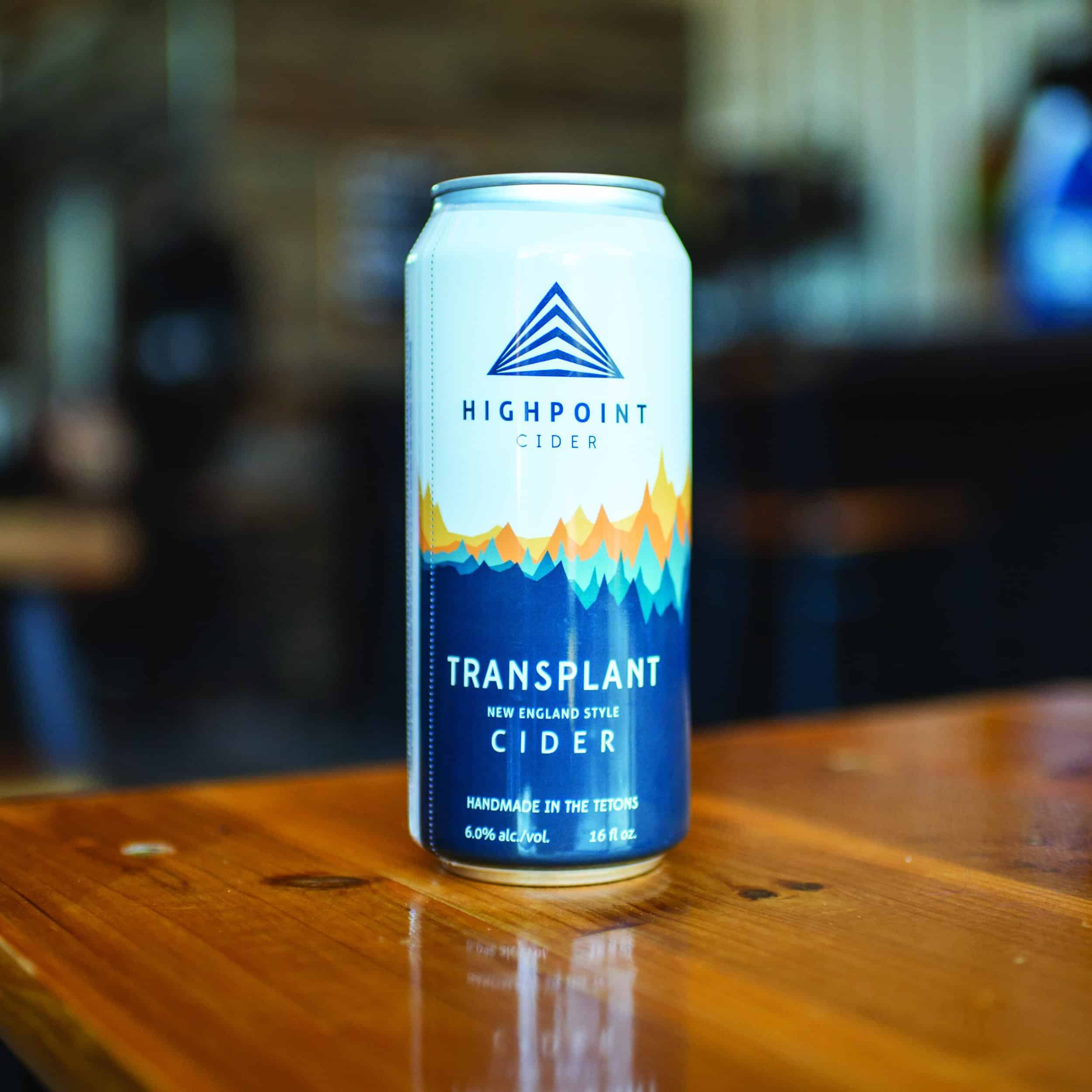
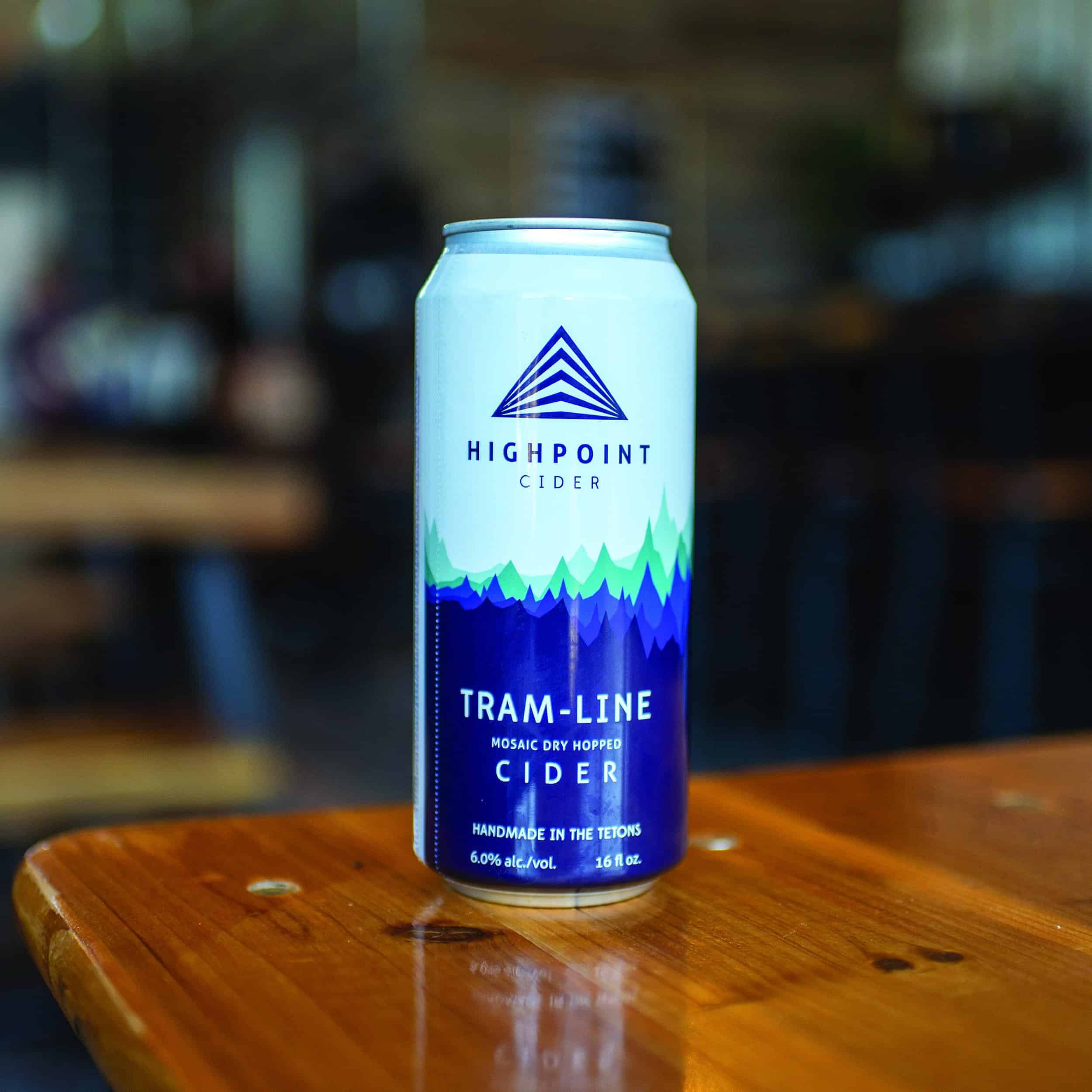
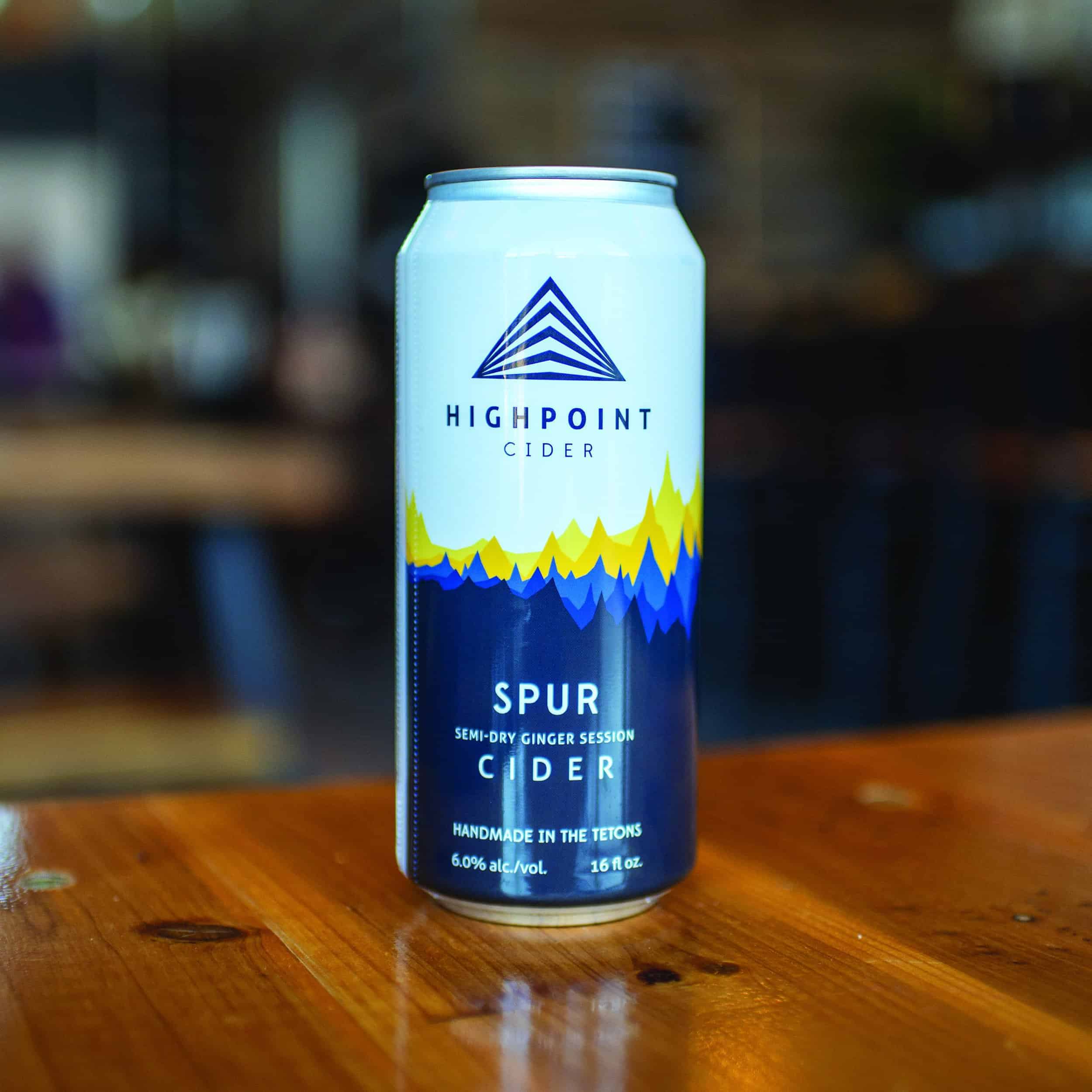
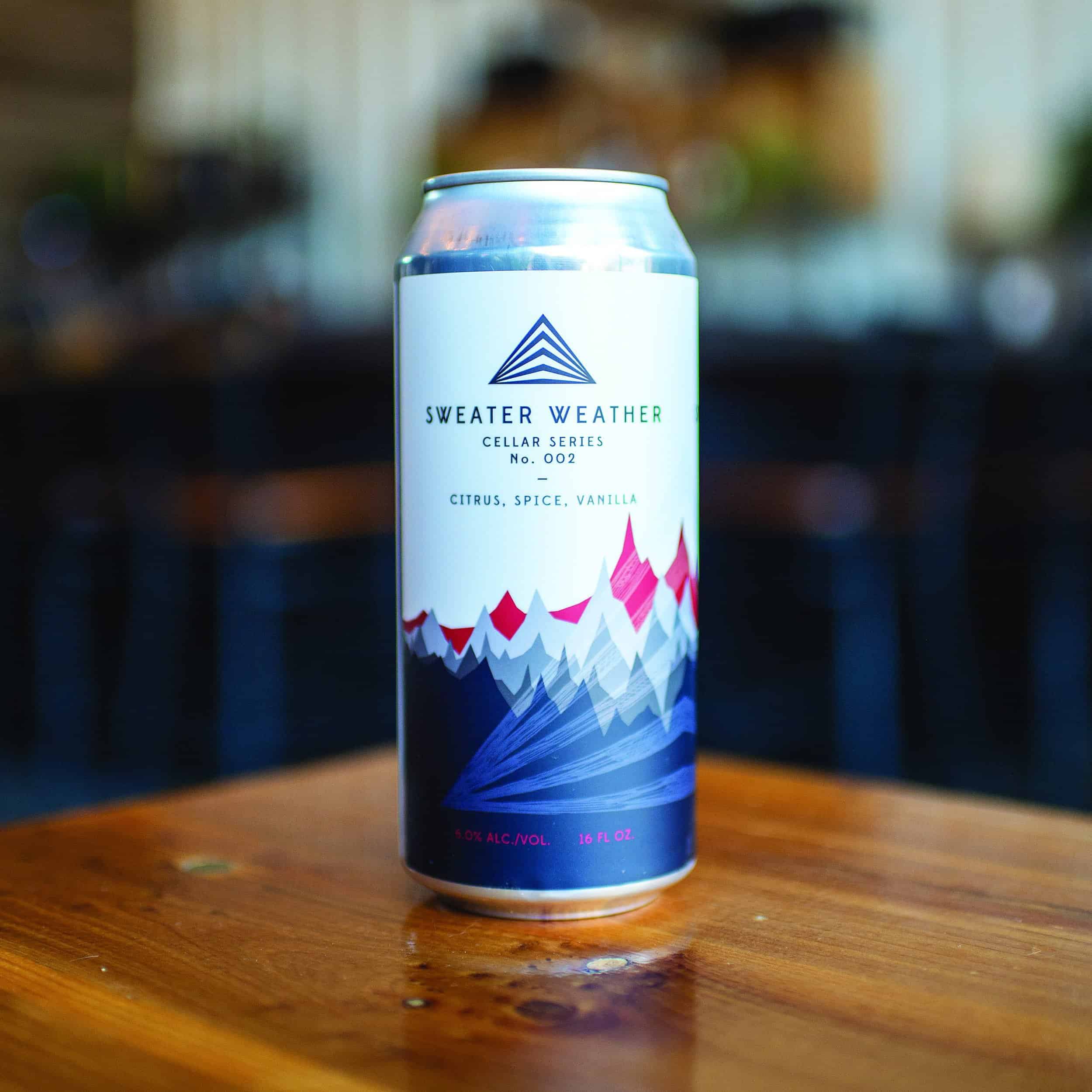
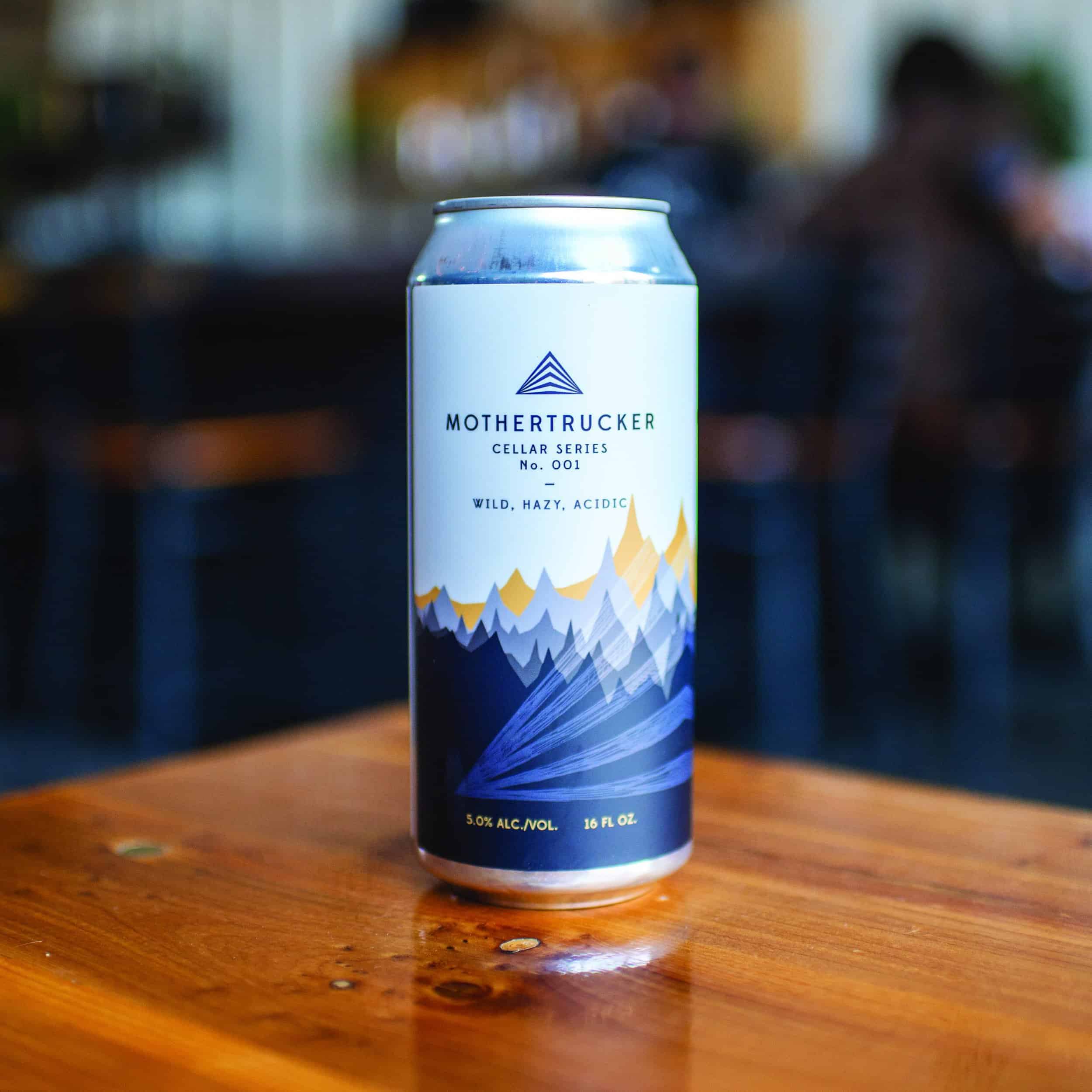
The Process
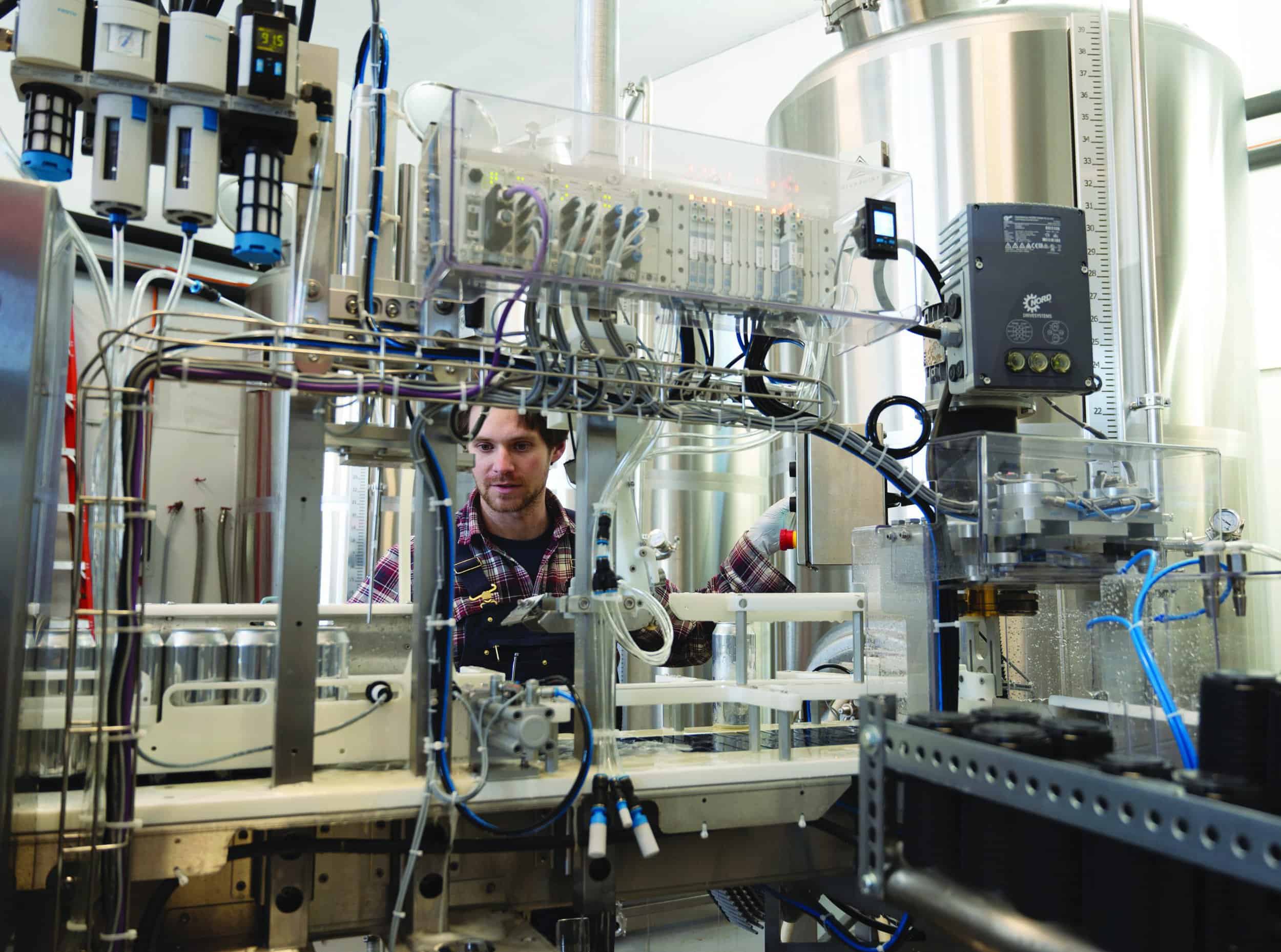
Twice a month, a truck delivers about 5,000 gallons of fresh-pressed juice from a variety of apples grown in Washington state. (It takes about 250,000 apples to make 5,000 gallons of juice.) At the cidery, the juice is transferred to two 2,500-gallon fermenters into which is also added champagne yeast—the yeast the brothers found, through trial and error, to work best. The yeast converts natural sugars into alcohol and CO2. Fresh fruits, spices, and hops are also added. A mechanical centrifuge eventually separates out any remaining yeast, which allows the cidery to use as few preservatives as possible. About a a month after the fresh-pressed juice goes into the fermenters, the cider is ready to be carbonated and canned.
A Short History of Cider Making
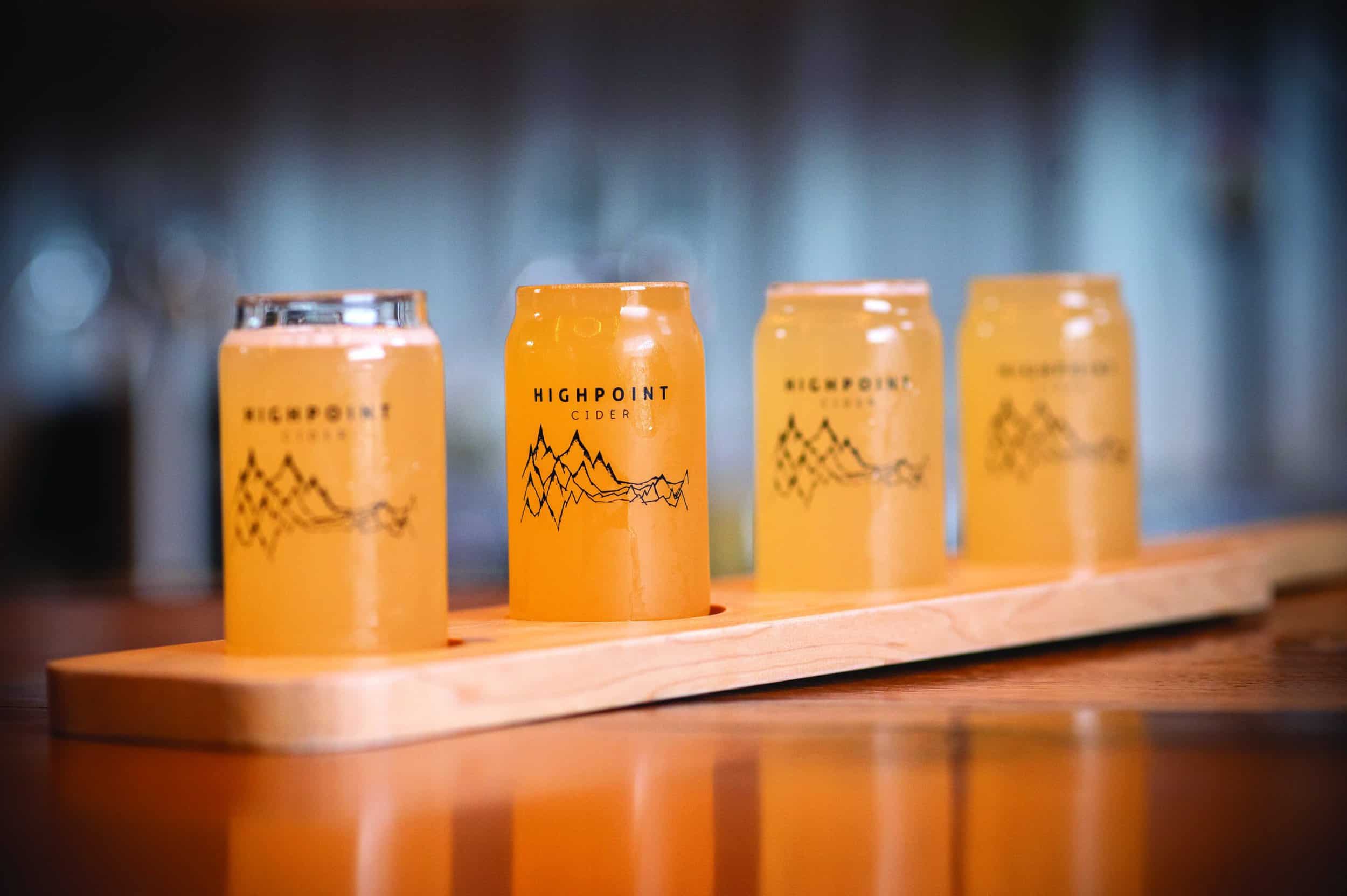
Although barley beer and grape wine predate cider by millennia—archeologists found 13,000-year-old traces of a wheat-and-barley-based alcohol in the floor of a cave in Israel—cider has a long history.
55 BC | Invading Romans discover Celts enjoying cider made from apples that originated in forests around Kazakhstan. The drink quickly spreads throughout the Roman Empire.
1600s | European settlers in New England have difficulty growing grains and barley, but apples grow easily. Cider quickly becomes popular in the colonies.
1800s | In apple-growing regions, people (including children) drink a pint or more of cider per day; it is safer to drink than water, which carries cholera, typhoid fever, dysentery, and E. Coli, among other parasites and diseases.
Early 1900s | A new wave of immigrants to the U.S.—many from Germany—bring their love for beer. The U.S. now includes lands on which barley grows well; beer is less expensive to produce than cider, and the latter’s popularity begins to wane.
1920–1933 | Prohibition closes almost all of the cideries in the country.
Late 1990s | Inspired by the craft beer movement, craft cideries start to grow in popularity.
2012 | Chasing Paradise, which specializes in meads and hard apple ciders, is founded in Teton Valley. (facebook.com/RobDupre01)
2016 | Farmstead Cider is founded in Jackson, Wyoming. The cidery uses apples foraged from trees that would otherwise be attractants for bears. (farmsteadcider.com)
2021 | Highpoint Cider taproom opens.
Details
The Highpoint Cider Taproom (7565 Lupine Ln., Unit D & E, Victor, Idaho) is open Tuesday–Sunday from 1–9 p.m., and kids are welcome. Tours are available if scheduled in advance (307/264-2151). The taproom doesn’t have a restaurant but serves chips and guacamole; some summer days, a food truck will stop by. Find Highpoint on draft at Grand Targhee (Trap Bar), Four Seasons Jackson Hole (Handle Bar), Gunbarrel Steakhouse, Coelette, StillWest, and Thai Me Up, and in cans at most restaurants in Jackson Hole and Teton Valley. Buy six-packs at The Liquor Store, Smith’s, Whole Foods, Victor Valley Market, Broulim’s, and Hoback Marketplace, among other retailers. highpointcider.com @highpointcider JH

